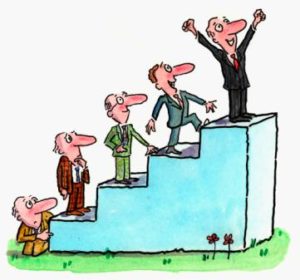Slow Down
Mistakes happen. But they’re more apt to happen when we’re rushing or multitasking, not truly paying attention to what we’re doing and how we’re doing it. When you make mistakes, you often spend more time compensating for or correcting them than you would have if you’d just slowed down in the first place, taken a few extra minutes, and really thought about what you were doing or communicating. Research shows that multitasking isn’t actually effective, it’s simply just an excuse for allowing oneself to be distracted. So next time you’re juggling six balls in the air as fast as you possibly can, slow down, and put five down. Focus on one task at a time, do it well, then move on to be more consistently successful.
1. Communicate in person instead of through email.
Sometimes it can feel like the easiest, speediest way to get your point across is to put it in an email and push “send.” But “easy” or “speedy” doesn’t make it right. One study from a professor at University of California, Los Angeles demonstrated the importance of nonverbal communication, exploring how messages get broken down: 7% is what you actually say, 55% is verbal, and 38% is inflection. In other words, face-to-face communication delivers the whole message. When you send an email, you immediately eliminate the visual and (likely) voice-tone components of communication. Lacking those two elements, the meaning and purpose of the message are more apt to be misunderstood, and erroneous assumptions could be made.2. Turn off distractions.
When you’ve got a project on the table that needs your full attention, give it your best by turning off your cell phone, having your office manager hold calls, or put a “do not disturb” sign on the door. Creating an environment in which you can slow down and concentrate will be key to completing this project error-free and in record time.3. Review your calendar at the start of each morning.
If your schedule is usually jam-packed, brief yourself at the workday’s beginning, so you’re clear on what you can and cannot accomplish, fit in, move to another day, take on, or give up.4. Tame your texting.
Texting and driving don’t mix, no question about that. But there are other potentially troublesome issues associated with texting too fast, as well. For example, say Jane and Bob both text you within a matter of three seconds, and you quickly text both back but send Jane’s text to Bob and Bob’s text to Jane. Now you have to sort out who got which text, apologize, and then retext both of them what you originally intended to text them. Multi-texting can lead to mistakes, the unintended sharing of personal/confidential information (imagine if you were texting a credit card number!), and wasted time. Again, just slow down, check what you’re doing before you do it, and you’ll save yourself a lot of hassles and headaches in the long run.5. Listen better.
When it comes to communicating with people, if you slow down — even stop and look folks in the eyes — you’ll hear and receive the information better. If you’re talking on the phone instead, put aside your other communication devices (email, mobile phones, ipads, etc.) and give that person your full attention. Visualize the individual as if you’re talking face to face. Not merely respectful, this more focused strategy for slowing down is responsible and productive. It will enable you to hear, process and respond better to the person on the other end. Then remember to think before you speak. Pausing momentarily to gather thoughts is always OK — not a sign of insecurity, self-doubt or weakness.How else can we slow down to prevent pitfalls or avoid common mistakes at work?



